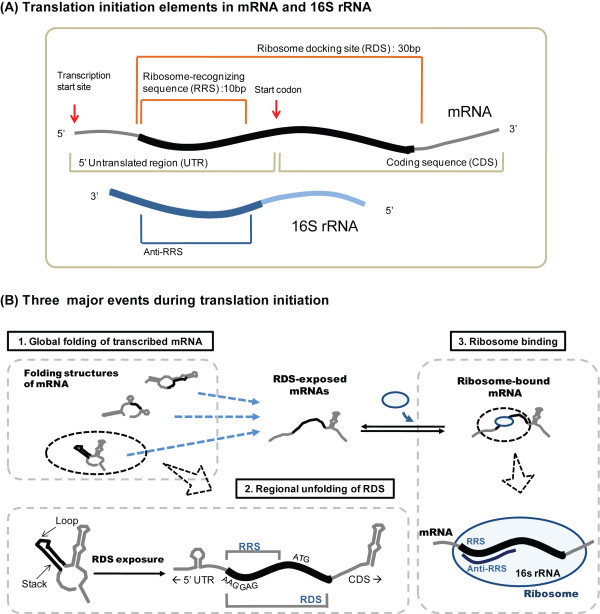Figure 1.
Schematic of the translation-initiation processes included in our model. A simple illustration of our translation-initiation model. (A) A common prokaryotic gene structure, including the parts that are essential for translation initiation. The ribosome-docking site (RDS) is the mRNA region that is actually occupied by the ribosome. Any secondary structure formed in the region can impede ribosome binding. The RDS, structurally identified by X-ray crystallography previously, starts from the first nucleotide of the Shine Dalgarno (SD) sequence, continues downstream for 30 nucleotides, and includes part of the coding sequence. The ribosome-recognizing sequence (RRS) within the RDS mediates actual binding of the ribosome to the mRNA. The strength of this binding is based on the affinity of the RRS for the anti-RRS, which is a corresponding complementary sequence found at the 3' end of the 16S rRNA (5'-UCACCUCCUU-3' in Escherichia coli). The 10-nucleotide sequence contains the conventional SD sequence (AAGGAG). (B) The translation-initiation process is modeled from mRNA folding to ribosome binding. (1) A transcribed mRNA folds into several structures according to its structural free energy. (2) Similarly, the RDS region of the mRNA is dynamically folded or unfolded according to its regional free energy. The site is exposed to ribosomes when unfolded. (3) Ribosomes bind to the exposed RDS via hybridization of the RRS and anti-RRS; the strength of this hybridization determines the ribosome-binding strength.

